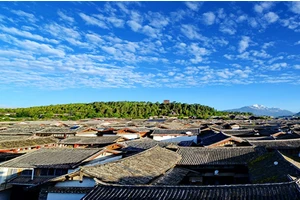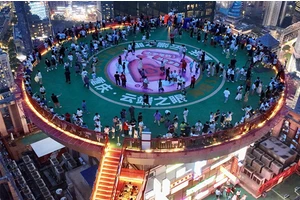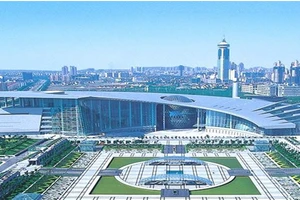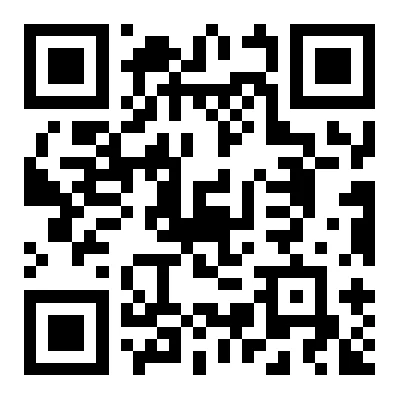Beijing black tourism
Fake regular travel agencies to accept customers at low prices
There are always a group of people holding leaflets and warmly greeting you. Some people have leaflets with fake seals of travel agencies, insurance companies and consumer associations to confuse tourists and reduce their vigilance in joining their illegal groups.
Open your mouth and collect money as soon as the car starts.
If you join their individual group, the money will be charged 100 yuan immediately, and then you will be asked to wait for other individual guests in the car.
After waiting for an hour or two, we can finally start, and the black guide's horn will ring.
The original 100 yuan covers everything, but when you get to the car, you can only cover part of it, so you will be asked to pay again. If you don't pay, you won't be able to play.
It's impossible to quit the group, and the car won't even let you off.
Don't talk about attractions and advocate shopping.
The tour guides of the regular team all introduce the attractions, related knowledge and precautions to tourists in the car.
This kind of black group introduces the shopping around the scenic spots. What is good, the price is cheap, and you can return it for free. Anyway, it is to make you feel that you are losing money if you don't buy it.
Compress the time of visiting scenic spots without explanation service
When you arrive at the scenic spot, the black tour guide will tell you how many minutes the xx scenic spot will take.
This time is usually only two-thirds or even half of that of a regular team, so it is impossible to have a good time.
So either hurry back and forth, or you can only wander around and come back. The tour guide sent you to the scenic spot and disappeared.
On the way back, the hometown shop appeared in fraud.
The real "mystery" of fraud activities is on the way back: tour guides will tell tourists that all vehicles entering Beijing need "security check".
And use this as a reason to park your car in the so-called "rest place" along the expressway to Beijing, that is, the "hometown shop".
"Hometown shop" is a kind of name for "roadside shop" near scenic spots in this tourism industry, which, as its name implies, pretends to be a legitimate tourist shop. This kind of "hometown shop" specializes in "low-cost travel" passengers.
After entering the "rest place", there are always several commentators at the scene, who use the time of "vehicle security inspection" to sell jade articles to tourists with the tour guide.
In the process of promotion, the "hometown shop" will "transform" into a formal and famous jade company, and the bosses of the company are all jade experts, which are famous at home and abroad.
After doing enough groundwork, the "boss" can finally make a grand debut.
And the "bosses" always "have a happy event at home" every time. They not only generously give a piece of "Burmese jade" to all tourists, but also sell the jade in the store to tourists at a 10% discount to induce tourists to buy it. As everyone knows, these "cheap" precious jade articles are all fakes.
There are 20 tourist attractions in Beijing: Forbidden City, Yanshan Tianchi, Badaling Great Wall, Nanluoguxiang, Tiantan, Summer Palace, Bird's Nest, Jingshan Park, Beihai Park, Shichahai, Yuanmingyuan, Ming Tombs, Yonghe Palace, Xiangshan Park, Mutianyu Great Wall, Red Brick Art Museum, Beijing Dashilan, Wudaoying Hutong, Beiluoguxiang and 798 Art District.
1. The Forbidden City
The Forbidden City was built in 1420, 600 years ago. As the royal palace of Ming and Qing Dynasties, the Forbidden City is at the center of the central axis of the whole city. It is the essence of ancient palace architecture in China and is known as "the first of the five largest palaces in the world". There are millions of cultural relics in the collection, accounting for one-sixth of the total number of cultural relics in China. Without a day or so, the essence of the Forbidden City may not be exhausted.
2. Yanshan Tianchi
The scenic area is surrounded by mountains and water, with birds and flowers, and trees and trees. In summer, the average temperature is about 20 degrees, and the environment is quiet and fresh. It has become a good place for tourists to relax, vacation and escape from the heat. Moreover, boat tours, airships, fishing, diving and 10 km rafting with bamboo rafts and rubber boats were carried out.
3. Badaling Great Wall
The inscription "You are not a hero until you reach the Great Wall" was erected at Badaling Great Wall, so people all over the world rushed to be heroes. Although only human heads can be seen on the city walls on holidays, it still proves the reliability of ancient buildings. Badaling Great Wall is the best preserved section of the Ming Great Wall, with dangerous terrain and strong chengguan.
4. Nanluoguxiang
One of the oldest neighborhoods in Beijing preserves the largest and highest-grade chessboard-style traditional Yuan Dynasty Hutong residential area. Later, it was developed into a commercial street. The collision between history and modern culture made it a new landmark in Beijing.
5. Temple of Heaven
As the name implies, the Temple of Heaven is the altar for the emperor to pray for heaven. Hall of Prayer for the New Year, Echo Wall and Mounds are all famous scenic spots in the Temple of Heaven. There are also many grandfathers in the park who take walks to keep fit and carry out collective activities in their happy old age.
6. Summer Palace
The Summer Palace is a royal garden built by Qianlong to honor the filial piety queen. The garden is based on the West Lake and imitates Jiangnan gardens and scenic spots. For example, Phoenix Pier imitates Taihu Lake, Jingming Building imitates Yueyang Tower, Wangchan Pavilion imitates Yellow Crane Tower, Houxihu Trading Street imitates Suzhou Water Street, and Xisuo Trading Street imitates Yangzhou 24 Bridge.
7. Bird's Nest
As the main stadium of the 2008 Olympic Games, the Bird's Nest cost 2.267 billion yuan. Its unique shape and structure and visual impact fully show the beauty of natural harmony. Ordinary ticket to 50 yuan.
8. Jingshan Park
For most tourists, the greatest significance of Jingshan Park is overlooking the Forbidden City. It also has a historical significance. In 1644, Li Zicheng invaded Beijing, and Emperor Chongzhen hanged himself, which was in Jingshan.
9. Beihai Park
In the northwest of the Forbidden City, the North Sea, the China Sea and the South China Sea form three seas. Beihai Park is a classical royal garden with the earliest construction, the most complete preservation and the deepest cultural deposit in the existing history of China. Attractions include Beihai White Pagoda, Jiulongbi and Wulong Pavilion.
10、什刹海
什刹海也作“十刹海”,四周原有十座佛寺,故有此称。周围有很多王府、胡同……尽诉着老北京的历史。清朝贪官和珅的恭王府也在此处。
11、圆明园
圆明园靠近颐和园,由圆明园、长春园和绮春园组成。1860年英法联军将主要建筑烧为灰烬,如今游客前来只能在残骸中凭吊,寻找当年辉煌的帝国身影。
12、明十三陵
明十三陵坐落于北京市昌平区天寿山麓,总面积一百二十余平方公里,距离天安门约五十公里。十三陵地处东、西、北三面环山的小盆地之中,陵区周围群山环抱,中部为平原,陵前有小河曲折蜿蜒。
自永乐七年(1409)五月始作长陵,到明朝最后一帝崇祯葬入思陵止,其间230多年,先后修建了十三座皇帝陵墓、七座妃子墓、一座太监墓。共埋葬了十三位皇帝、二十三位皇后、二位太子、三十余名妃嫔、一位太监。
13、雍和宫
清康熙33年,这里是皇四子胤禛的雍亲王府,后来雍正改为了“雍和宫”。乾隆9年(1774)成为了藏传佛教寺院。
14、香山公园
香山公园是一座具有山林特色的皇家园林,在过去每逢夏秋时节皇帝都要到此狩猎纳凉。园内文物古迹众多,秋天去赏红叶是很不错的。
15. Mutianyu Great Wall
As the Great Wall, Mutianyu Great Wall has far fewer people than Badaling. This section of the Great Wall was also visited by former British Prime Minister Major and former US President Bill Clinton. Therefore, it is also a great wall attraction with many foreigners. The slope is rather shaky. It is recommended that tourists with good physical strength go there and take the slide down the mountain.
16. Red Brick Art Museum
The biggest difference between the Red Brick Art Museum and other art galleries in terms of architectural composition is that the modern gardens elaborately built with the traditional garden images of China constitute a double extension of the visiting experience and architectural structure.
17. Beijing Dashilan
Located in the center of old Beijing, it is a famous commercial street in Beijing. The city here is also the entertainment center of Beijing, where many famous theaters, teahouses, bookstores and the earliest cinemas in Beijing's history have settled.
18. Wudaoying Hutong
Wudaoying, formerly known as Wude Weiying, is now the latest gathering place of petty bourgeoisie literature and art in Beijing, with all kinds of creative shops, cafes and cultural and creative products.
19. Beiluoguxiang
This North Luogu Lane, which is only one street away from Nanluogu Lane, is quiet and pleasant, as if it were a clever and shy woman. The farther you go, the farther away you can be from the bustling and impetuous city, and the years and beauty are precipitated.
20. 798 Art District
798 Art District is favored by many artists because of its Bauhaus-style workshop style, which also combines idle workshops with modern art and is an art distribution center in Beijing.
Prev: India tourism program
Next: Longzhigu travel






